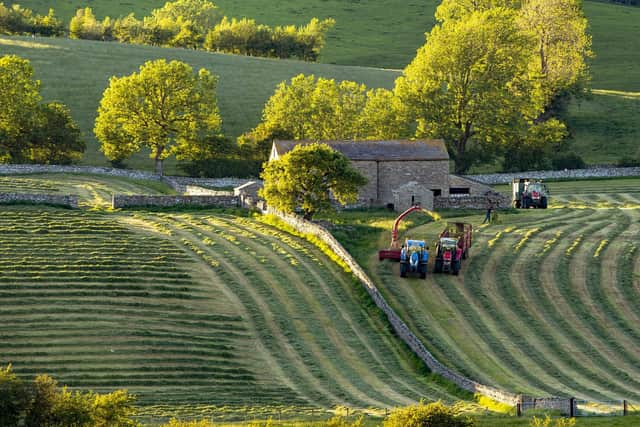New nature investment standards can help win the confidence of farmers - Glyn Jones
We know that a lack of trust in these emerging markets is a significant barrier for farmers who are weighing up the various funding opportunities available to support nature-friendly projects, such as agroforestry and habitat creation. In a recent online poll run by Fera Science, 70 per cent of farmers and land managers told us they had ‘no confidence at all’ in engaging with private green finance agreements.
Therefore, launching new nature investment standards which provide clear rules on how this market will operate, and confirming how private income streams can be stacked with ELMS (Environmental Land Management Scheme) funding, is another step in the right direction for more clarity and certainty for farmers.
Advertisement
Hide AdAdvertisement
Hide AdDefra’s strategy has been built on a strong evidence base, applying farmer insights from ELMS test and trial projects to help shape these priority areas for support.


Over 120 farmers and land managers across the North York Moors are currently involved in one of these valuable projects, led by the National Park Authority, with support from Fera and other industry partners.
Thought to be the largest of its kind in the UK, the aim of this 16-month project is to help farmers to assess the financial implications of land management changes they could make to help sequester carbon, enhance biodiversity, improve water quality, and improve flood management. This started with equipping producers with a natural capital assessment of the landscape they farm. Using the best available science within our LAND360 service, advanced remote sensing technology and geographic information systems (GIS) were applied to create a detailed habitat map of the 1,436km2 National Park.
Each habitat area, which includes heather moorland, forests, and coastline, was then given a score based on carbon storage capacity and biodiversity value.
Advertisement
Hide AdAdvertisement
Hide AdBuilding this bespoke ‘natural capital baseline’ has provided farmers and land managers with a benchmark to base decisions on. This rich pool of data, that shows the quality and quantity of the natural capital they have control over, can now be included on farm balance sheets – just as any other physical assets would be.
Within the next stage of the project, we have also been supporting farmers with testing different land use scenarios, using a combination of private and public funding options available.
These proposals have been shared during farmer workshops, which pose an ideal opportunity to gather feedback from those with ‘boots on the ground’.
Fundamentally, the most appropriate combination of income streams for each farm is dependent on unique landscape factors and how new environmental projects would fit alongside the existing farm business strategy.
Advertisement
Hide AdAdvertisement
Hide AdSo, to value their natural capital accurately and get a fair deal for the environmental benefits being delivered, it is essential for farmers to understand exactly what natural assets they have on the land they manage before entering any financial agreements.
Glyn Jones is Head of Science (Plant) at Fera Science in York.